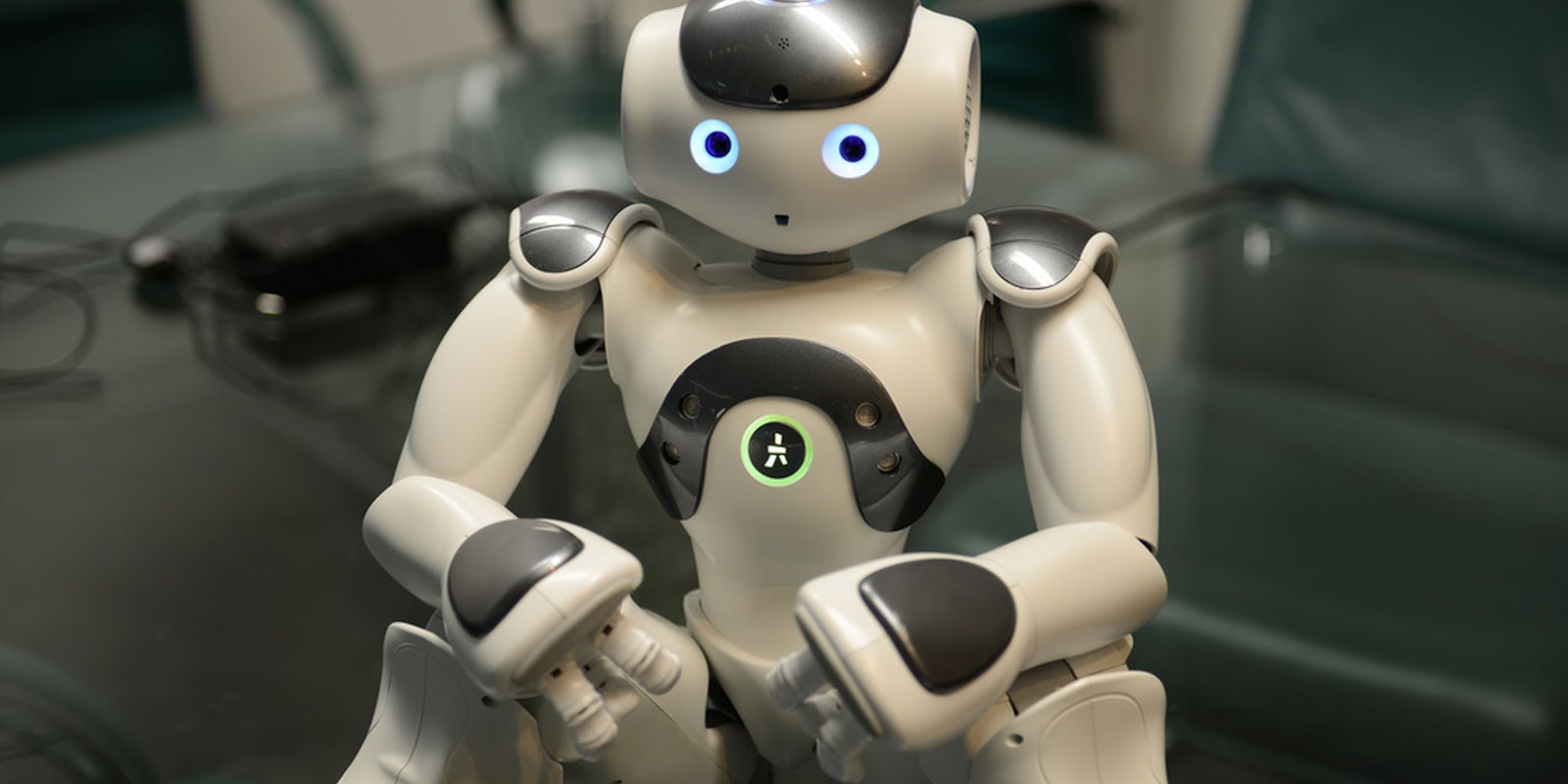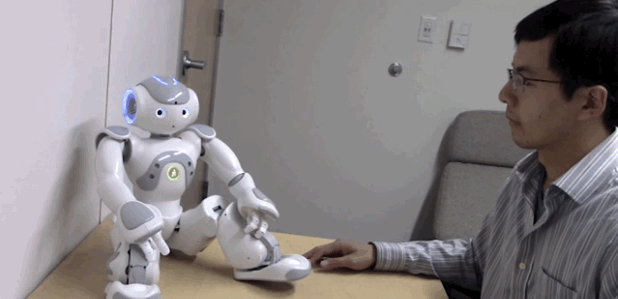Humans have all kinds of reactions to robots, from affection for their personal celebrity lookalikes to uncomfortable feelings towards humanoid robots that lack emotion.
Physical responses vary, too, and a Stanford University study found that humans became aroused when touching different parts of a robot’s body, especially those considered to be private or “off-limits” parts on people.
Stanford’s Jamy Li, Wendy Ju, and Byron Reeves ran an experiment to study people’s reactions to touching a robot to find out just how weird people felt about putting their hands on a humanoid bot.
A NAO robot told participants to point or touch 13 different parts on its body. The 10 right- and left-handed participants wore a sensor that measured their galvanic skin response, or skin conductance (when stimuli are physiologically arousing, skin’s electroconductivity briefly increases), during their interaction with the bot.
Researchers found that when people touched the robot, the physiological response was greater than when they pointed at it. And a full 90 percent of participants were more aroused when they touched less-accessible areas like the buttocks. That’s not to say the participants sexualized the robot, just that the action was stimulating in some way. As the Washington Post explains:
In this case, “arousal” doesn’t necessarily mean that the participants were having sexual thoughts about the robot. It just means that touching these intimate zones made them more alert. But whatever was making them more aroused when it came time to touch zones that might be off limits in other humans, they also seemed hesitant to do it – 80 percent of participants took longer to touch more “private” parts than ones commonly touched in human social interactions.
The research shows people may have a tendency to treat humanoid robots with similar social norms and expectations as they would other humans—elevated physiological response and a hesitation to touch private parts indicate they’re not interacting with a piece of hardware they feel comfortable putting their hands all over.
It’s not surprising that people might feel uncomfortable touching places on a robot they wouldn’t touch on another person. People humanize robots they interact with personally; for instance, more than 80 percent of Roomba robot vacuum cleaner owners name their robot. And when humanoid robots are programmed to demonstrate emotion, it can eliminate some of the discomforting feelings we get that are associated with the uncanny valley.
“Our work shows that robots are a new form of media that is particularly powerful. It shows that people respond to robots in a primitive, social way,” Li said in a statement. “Social conventions regarding touching someone else’s private parts apply to a robot’s body parts as well. This research has implications for both robot design and theory of artificial systems.”



